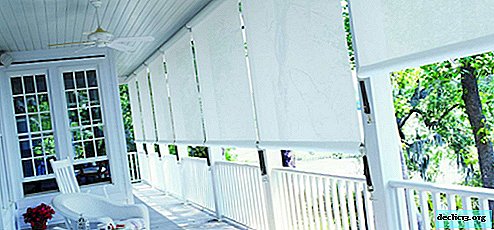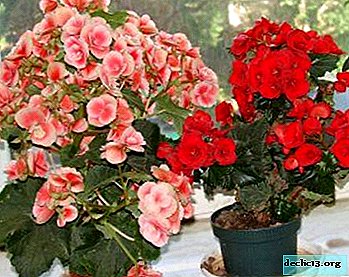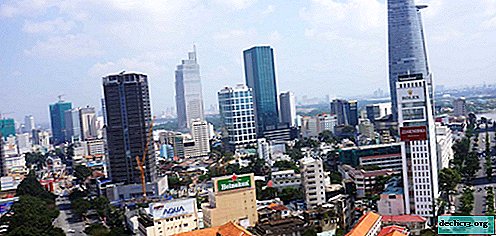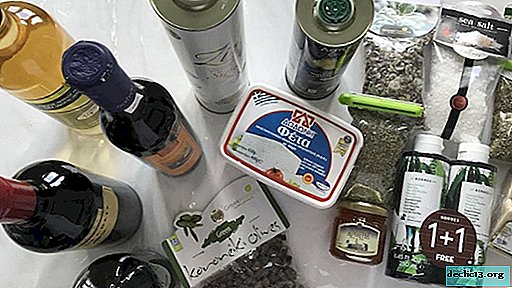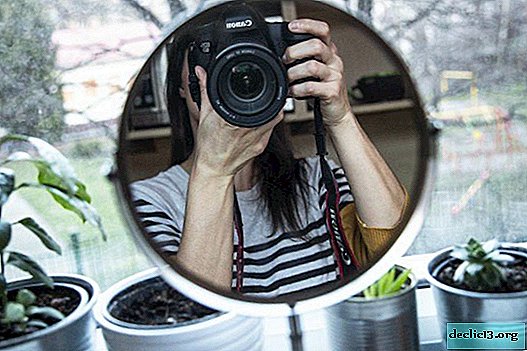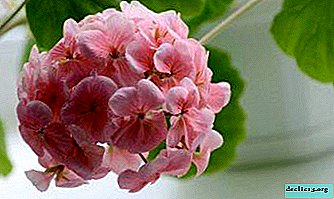Acquaintance with Kalanchoe Degremon
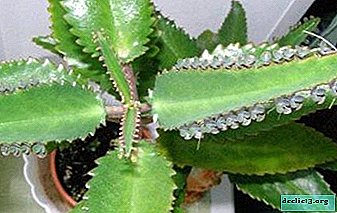
Some think about what plants would look good in their room, giving comfort, others dream of their own greenhouse, while others are limited to one or two flowers. Kalanchoe degremon is that unusual and interesting flower that will decorate any windowsill and will not forget to cheer up everyone around. About the features of this flower, growing conditions and the rules for caring for it, we will tell in our article. Also watch a useful video on this topic.
Botanical Description
Kalanchoe belongs to the genus Succulent plants of the family Crassulaceae. Despite the fact that some types of plants reach three to four meters in height, this can not be attributed to the Kalanchoe degremon, since its sizes vary from fifty to eighty-five centimeters in height.
Plants prevail mainly in the tropics, so they are not afraid of a long stay in high humidity. They are also not picky in arid areas. The leaves are different in shape, they reach from ten to twenty centimeters in length. There are thick, juicy, elongated, jagged. They are dark green, green or blue-green in color and have purple spots on the back that resemble brush strokes. The leaves are located along the trunk, and somewhat resemble a flower bud.
ATTENTION: If we talk about flowers, then at the top of this plant in the summer, quite large buds of light pink or pink color may appear, which are collected "in a panicle." The severity of the flowers formed on the peduncle can lead to loss of plant balance and stability.As mentioned above, Kalanchoe leaves are succulent. They accumulate moisture and use it later to survive in an arid environment. Kalanchoe has only one large stem. This plant is also called bryophyllum, a home doctor or a Goethe flower.
Photo
See below for a photo of Kalanchoe Degremon:



Varieties
Kalanchoe degremon gives layering, so tubal-colored Kalanchoe, whose stem is surrounded by tubular leaves with daughter small plants, can be attributed to its varieties.
History of occurrence
The birthplace of Kalanchoe is the island of Madagascar. Also, this plant is quite common in Asia. It is not surprising that the first references were in the records of medicinal, medicinal plants. The records date back to the eighteenth century. Kalanchoe was brought to Russia by merchants, one of whom told the story of the unusual healing of a Russian sailor who had been saved thanks to this plant.
Features
Kalanchoe degremon has a unique healing property and this is a huge plus. Residents of cities often suffer either from a lack of vitamins, or from SARS. And in this case, a flower can easily help get rid of problems. Leaves have a huge amount of useful substances, for example, polysaccharides, minerals, organic acids and vitamin C.
Some gourmets eat this flower for food, for example, finely chopped leaves can decorate almost any vegetable salad. Juice helps with gum inflammation, it is enough to rinse your mouth every morning and evening. Kalanchoe juice will be a loyal assistant in the rescue from the flu.
Where and how to plant?
Kalanchoe is one of the few flowers that will do almost all the work for a person. Reproduction usually occurs by both seeds and buds.
In the wild, Kalanchoe grows on sandy soils.. To create similar conditions for growing this flower in a room, you should:
- Take loose soil and add earthen mixture to it.
- To obtain an earthen mixture, it is necessary to mix such components as humus and sheet earth, sand.
- These ingredients must be mixed in a 1: 1: 1 ratio.
A small amount of peat and coarse sand also does not hurt.
TIP: If propagated by seeds, then they should be planted in a pot large enough in size. When the flower has already grown enough, a prerequisite is pinching, which occurs every spring so that the flower looks neat.Lighting and location
 Kalanchoe degremon is an unpretentious plant, and if you choose a place in the room, then it should be at least a little lit by sunlight. With plenty of light, the color of the leaves may change slightly, they turn red.
Kalanchoe degremon is an unpretentious plant, and if you choose a place in the room, then it should be at least a little lit by sunlight. With plenty of light, the color of the leaves may change slightly, they turn red.
In ideal conditions for Kalanchoe, the western and eastern sides will be the best. In winter, additional lighting is desirable.
In the absence of sufficient light, the plant weakens, and the lower leaves may fall.
Humidity
Due to high humidity, the leaves may become brown or black spots.. It also depends on the temperature, if the temperature is very low, then the flower can get sick.
Watering
Despite the fact that Kalanchoe has an interesting property - to store accumulated moisture in the leaves, it should be watered, but in each period differently. From March to October, watering should be moderate, and the soil should not be too wet before the next watering, since an excess of moisture acts destructively on the plant. In winter, the frequency of watering can be reduced.
Breeding
Reproduction of Kalanchoe is not difficult. When young plantlets fall from the leaves of a given flower, this means that they require self-care. Then there is a collection of processes. For splendor with a maternal instance, leave her "children." It looks pretty and pretty enough.
Diseases
Despite the vulnerability of the plant, it is still susceptible to certain diseases.
- One of the most unpleasant diseases for Kalanchoe is late blight or late blight. Usually, ugly brown spots or brown deposits appear on the leaves of the plant. The reason may be poor ventilation or an excess of water in the soil.
- Powdery mildew also did not pass Kalanchoe. White spots form on the leaves of the plant, after which a fungal coating appears. This disease occurs due to excessively dry air, then Kalanchoe begins to drop leaves. If a similar plaque has formed, it is necessary to move the flower to a fairly cool place.
- Another disease of Kalanchoe - gray rot. Signs of this disease appear in the form of weeping gray spots, and if no measures are taken, they grow and turn into porridge. When a flower freezes, black spots usually form on the stem. In winter, the temperature should not be lower than fifteen degrees, otherwise the flower may become sick.
Pests
Pests of home flowers also did not ignore this flower.
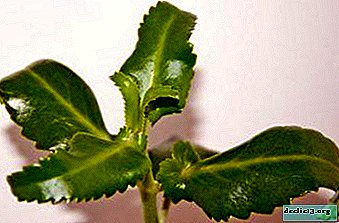 Kalanchoe is affected by small insects, which is mealybug. It propagates fungus or "black mold". When this insect appears, the plant reacts and releases white wax juice on the leaves and stems. Mineral oil will help the flower to become healthy again.
Kalanchoe is affected by small insects, which is mealybug. It propagates fungus or "black mold". When this insect appears, the plant reacts and releases white wax juice on the leaves and stems. Mineral oil will help the flower to become healthy again.- Shield prefers the inner side of the leaves of Kalanchoe, and it is quite easy to notice it. Usually, after the presence of this insect, leaves begin to dry in Kalanchoe.
- Also aphid - the enemy of the flower. She can easily enter the house through a window. The soil of this flower is oversaturated with various fertilizers, which will only please an unpleasant guest. Also, it does not bypass the inner side of the leaves, the stem, the trunk of the Kalanchoe. The aphid begins to suck out the juice, after which the Kalanchoe becomes sticky, and the aphid tries to poison the plants with poison, which it introduces.
Purchase
Kalnhoe degremone is quite easy to find. Seeds are bought at the store, which is located there almost the whole year. One should choose Kalanchoe with well-colored, large leaves. With careful care, this flower will grow for many years.
Kalanchoe degremona is truly a unique and interesting plant that has a lot of useful properties. No wonder she is called a home doctor. Not only because of the beautiful appearance, but also because of the healing properties, it is worth buying this flower and decorating your room with it.

 Kalanchoe is affected by small insects, which is mealybug. It propagates fungus or "black mold". When this insect appears, the plant reacts and releases white wax juice on the leaves and stems. Mineral oil will help the flower to become healthy again.
Kalanchoe is affected by small insects, which is mealybug. It propagates fungus or "black mold". When this insect appears, the plant reacts and releases white wax juice on the leaves and stems. Mineral oil will help the flower to become healthy again.
